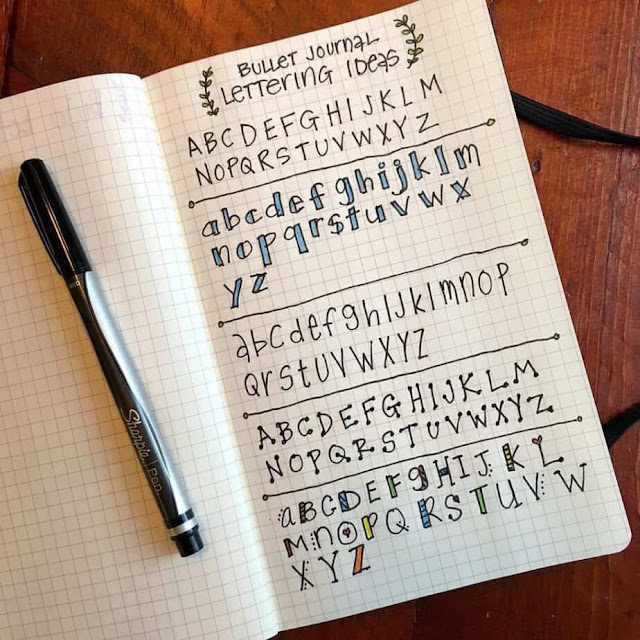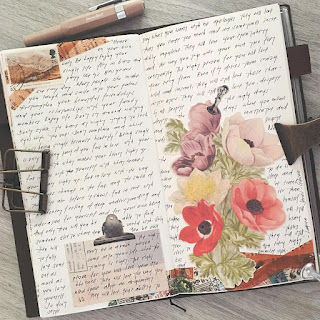Life below the stairs during the Victorian era was not glamorous. If you think working for the public in a restaurant or store puts you in contact with ungrateful people, consider what the servants of the ungrateful rich dealt with. Service jobs were done by "inferiors" who were supposed to be invisible unless needed. If you were treated well you were lucky, but not everyone worked for people as nice as the Bridgertons.
To be clear I am not talking about slavery. This is paid servanthood that is not forced. This is comparable to being an employee in personal maid services or a kitchen worker (though today you won't be treated like you are inferior unless you have a crappy boss). The rich employed people to bend to their every whim. While Cinderella may have technically been a slave, most domestic servants were paid money. If they weren't it was slavery.
The Roles and Duties
The wages of servants were different based on roles. The butler had the benefit because he had no expenses except clothes, got discounts from tradesmen, collected the end of candles, and collected one bottle of wine for every six bottles served. Below is a range of wages (1890s) in today's money based on my research. In America today these are below the poverty level. In between this range is the butler, cook/housekeeper, lady's maid, parlour maid, cook, housemaid, kitchen maid, and scullery maid. All of these people have no money for leisure by today's standards. Some of them work for next to nothing.
Housekeeper - 9,139.00 per year to Between Maid - 1818.00 per year
The duty of house staff will revolve around the family. There is also a social hierarchy within servants. A butler and housekeeper, for instance, are higher above other staff members. Uniforms were only 1900s creations. It is basically loyalty to a family for a long time. The chores the upperclass wouldn't do were done by the house staff.
Maid duties vary based on how many maids there are. Scullery maids did dishes. Laundry maids did -obviously - laundry. Parlous maids maintained the drawing and sitting room. Chamber maids maintained bedrooms. A lady's maid was the private maid of the lady of the house. Between maids ran from the garden to the house. Kitchen maids helped the cook.
The kitchen also included the cook and under cook, employed by the butler and housekeeper. The cook managed all the kitchen staff. Their job was essential to impress guests. The footmen represented the estate. They accompanied the lady of the house on trips, served meals, and assisted the butler. They were generally well dressed. They held doors open and helped at meal times. The Butler was the highest rank and ran the staff. He oversaw all of it. The housekeeper helped him run the female staff and decor in the home. She would have been a high ranking servant.
The grounds keepers included head gardeners. Grooms and stable boys cared for the horses and were often young boys as young as ten. Game keepers maintained the bird population for hunting purposes. A governess and nurse looked after the children. If more than one nurse was there, it'd be a head nurse overseeing other nurses. You could be around 15 years old to be a nurse. Governesses taught female children (Meg and Jo March as an example). Boys were sent to boarding schools (like what Jo ran). She'd be in a difficult status position due to being higher than a servant and lower than her employer. This was caused by a governess being educated while most servants weren't.
The Upsides
Despite the hardships of the job, the service people took pride in their work. At first, they had to ask for even short periods of time off (and that was frowned upon). However, just like now, they could get days off. It was sometimes given as a reward and taken away as punishment. The 1880s began a half day off after lunch on Sundays. Once each month was a trend at that time, too. Provided chores were finished, they got these days free. The 1900s introduced an evening off a week, but often only in households with many servants that covered each other. Time off was a thing even then. It was provided and it was worth more than gold to someone who worked for so much of their life. The 1890s even offered them holiday leave for one to two weeks, which they used to see family. They often saved wages for a good while to afford the train travel.

While no one was looking the servants let their hair down. Like I'll mention in the next section, forbidden visitors often came when the master and mistress were away. It was also not uncommon for some family members to get cozy with servants. It caused some scandal if it created a child out of wedlock, but often it was on the down-low. Large households that required more servants had "the high life" downstairs. This was playing cards, secret visitors (forbidden, obviously), pillow fights, music, dancing, getting drunk, and practical jokes. Life was not always dull and boring. I'm willing to bet that servants probably created a family-like bond in the process of working in the same house for years.
Depending on your master or mistress, they might have a kind heart and provide a piano or reading and sun room for you. You could have relationships with your family. Most were not denied trips to town and walks in gardens. All this was yours for the use, provided you got back on duty on time (9 or 10 pm). While that cuts leisure time short, I will say a kind employer did give you at least some time to enjoy yourself.
Servants had an advantage when it came to family secrets and closet skeletons. Being invisible unless you are needed has a weird benefit that allows you to hear and see what others don't. In short, you have more gossip fuel than you know what to do with (which servants got known for). The servants know the family better than they ever dreamed. If I were investigating a murder I'd go escort myself down the stairs and get the goods on everyone while nobody was home. I'd become a forbidden visitor for evidence. I'm not actually sure if being invisible is a good or bad thing in this case, so I'll say it just is (neutral). It depends on the situation.
A living space and a meal were guaranteed if you served a wealthy family. If not, you were in a bad spot. The worst of everything if you served someone who barely had enough money to pay you. But in the case of a wealthy family, you had a roof over your head and food to eat. It was good to not be on the street. It was better than selling yourself for money. If your employer cared for you they treated you well. After years of loyalty to a family, some of them might take care of your needs later on in life.
The Downsides
If you wanted your own personal space to be sacred, you were mistaken. Consider Harry Potter sleeping in the cupboard under the stairs and Cinderella in the attic. Consider going to bed in the kitchen area. An undeniable fact was that early in the 1800s servants did not have their own space. You were not to be seen when you were not wanted. Harry Potter and Cinderella slept where 1800s servants would have. Men tended to guard the plate down in the kitchen, though, so they bedded down in the kitchen often.

Even after the 1900s revealed servants' rooms that were an attempt to attract women into personal service, the personal space was still not there. You couldn't put up personal decor. Your space could also be raided at any time and you couldn't say no. Household guides suggested keeping servants on their toes. Sound fun? Yeah, I didn't think so, either. A bare-bones room with no personal effects that is hidden away from where guests would roam might be a servant's quarters in some old houses. Servants halls provided a social life, as limited as that was, for the staff. That, too, was a room that was particularly plain. If they had time to gather around a fire it was available. No gas lighting was provided downstairs in most households. This type of life required getting past a feeling of lonely isolation because most of your social contact was with fellow servants and your employers did not get friendly with you - although some employers and servants got friendly and had what is known as a "bastard" (an illegitimate child).
I will note that making servant quarters plain is not dangerous. I will also note that, according to Timeline documentaries, they cut costs in the servant quarters in some houses that cost servants their lives or health. Stairs were sometimes only even where the guests were about and in the areas that were lived in by the family. Staircases in servant areas were sometimes not even. When you are carrying a plate of food or any heavy object that can throw a monkey wrench into your day faster than an avalanche with no rescue crew. Servants died on stairwells that didn't have even steps because it cost less to make servant stairs subpar. It extended the budget of the family to do this. Older stairs can be uneven anyways, yes, but if you notice that one area of an old Victorian era house has standard steps and the downstairs does not you are seeing the difference in status reflected into how the house was built.

When I said it was lonely, I also mean romantically lonely. Unless you met your men in private and in secret you really couldn't have a relationship. They couldn't kiss you goodnight before duty because of a rule of "no followers" on the way back to your duties. Again, most of the relationships that happened were not spoken of and the strictest of secrets. Visitors to servants were forbidden. In some family closets you will also find a few skeletons. Children were had between a family member and a servant downstairs in some circumstances. In wealthy circles this was nothing short of shameful for both the servant and the family member, however, the servant would get dismissed and be unlikely to find work in that wealthy circle. It was worse for the servant.
There were rules to follow by servants, generally summed up by being invisible unless needed. It was expected that you be calm and quiet. You basically have to do your job speaking as few words as possible and minding your Ma'ams and sirs. You are to keep your thoughts to yourself. Again, invisible is the expectation. Efficient, quiet service is what is asked of you. You are essentially part of the house itself. What this screams is that you are not equal. Does it sound like the worst job in the world? Actually, no, but depending on your employer it could be absolutely awful or absolutely wonderful. I put it under downside because it sounded so strict, yet, it depends on how strict your master or mistress is. Children actually related to servants more often due to the expectation of being seen and not heard. Governess and nurse bonded with the child more than some parents.
Holidays were hard. Boxing day was for servants (giving boxes to servants). Sometimes they switch roles on that day. Servants had to run parties for the family. Wealthy families and upper-class families had many parties. You worked when others were off and free. You bent to the whims of your master and mistress for your paycheck.
A Bonus Section about Victorian Sexism
I hesitate to bring this one up, but I think it is worth noting. It is history and it is sexist, but it happened and I won't ignore it. Women were sometimes treated like children. What I hesitate to tell you is that women who did wrong in households were sometimes spanked. The guide to Victorian household management (written by Mrs. Beeton) suggested it. This was considered a wholesome book. Yes, I know, it's awful. Would you like an excerpt?
“I am distinctly in favour of the rod, duty, obedience and discipline make for very good, well behaved girls. Even ladies of rank must on occasion be treated like a child and put across the knee. She must make her own arrangements for her punishment, as it is essential that she must loose all sense of power. Failing this the party administering the punishment should always part or lower the girl’s draws as this adds to the feelings of shame.”
This is a problem. This was only suggested for women. Did young boys get the belt for doing wrong? Sure, but no one suggested that they pull down their drawers and spank them with their drawers down when they were no longer children. Men got to grow out of childhood and women in that era did not. Let's not repeat the Victorian era, please! You even see this in some westerns.
*Here I will decline to put any pictures because the ones I found from the Victorian era were either erotica novels, showed a full butt to the world, or were children being spanked and not grown women. All of the pictures of women looked so sexualized that it made me sick.*
Sources:
Servants' Lives - Weddington Castle
On spanking and Victorian household management | A Voice in the Corner
Servants: A life below stairs - BBC News
The Servants of a Victorian Household (simplehistory.co.uk)
Victorian Era Servants in homes: Duties and rules (victorian-era.org)
What was it like to be a servant in Victorian times? (treehozz.com)
The Life of Domestic Servants in Victorian England (thegreatcoursesdaily.com)
Pictures:
https://austenauthors.net/regency-servants-valet-and-ladys-maid/
(510) Pinterest
Life in domestic service in the 1930s - 1939 Register | findmypast.co.uk























